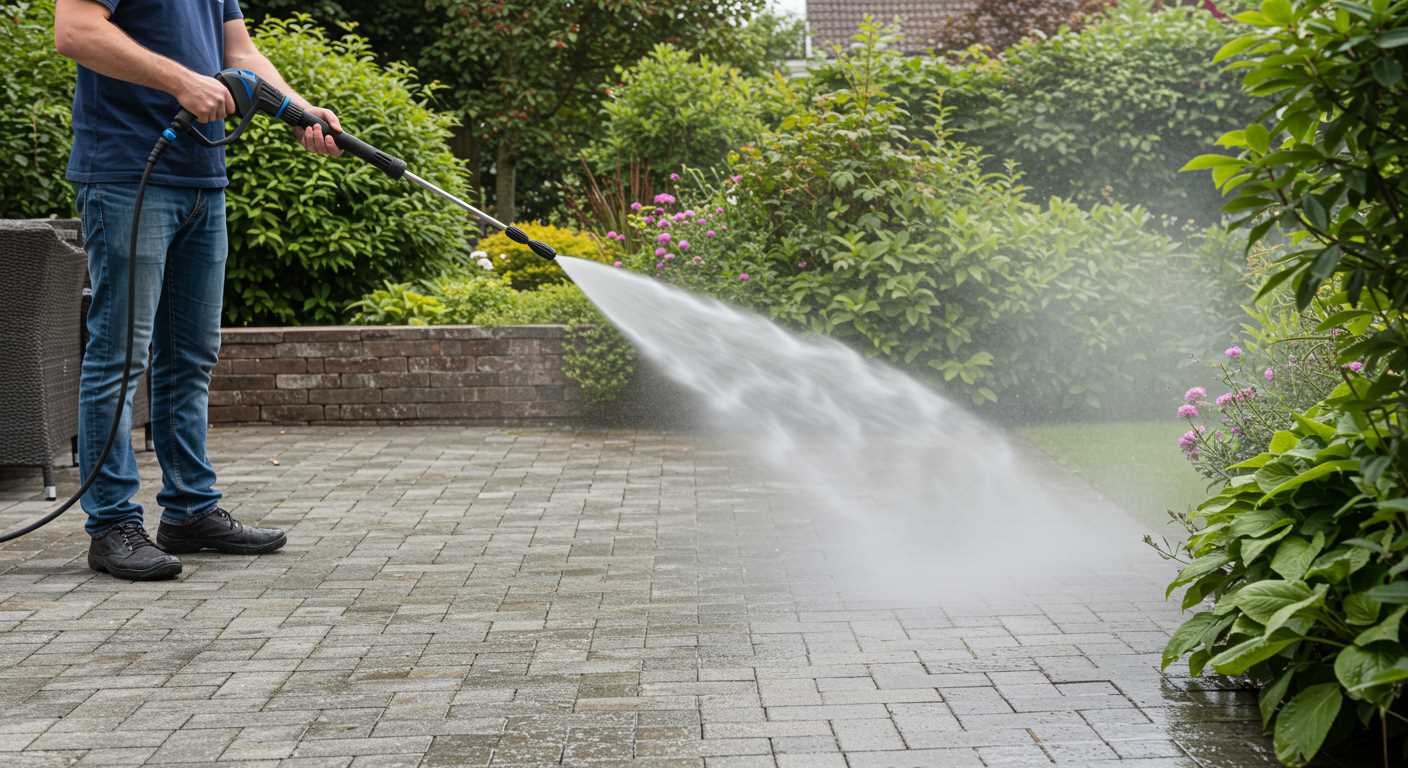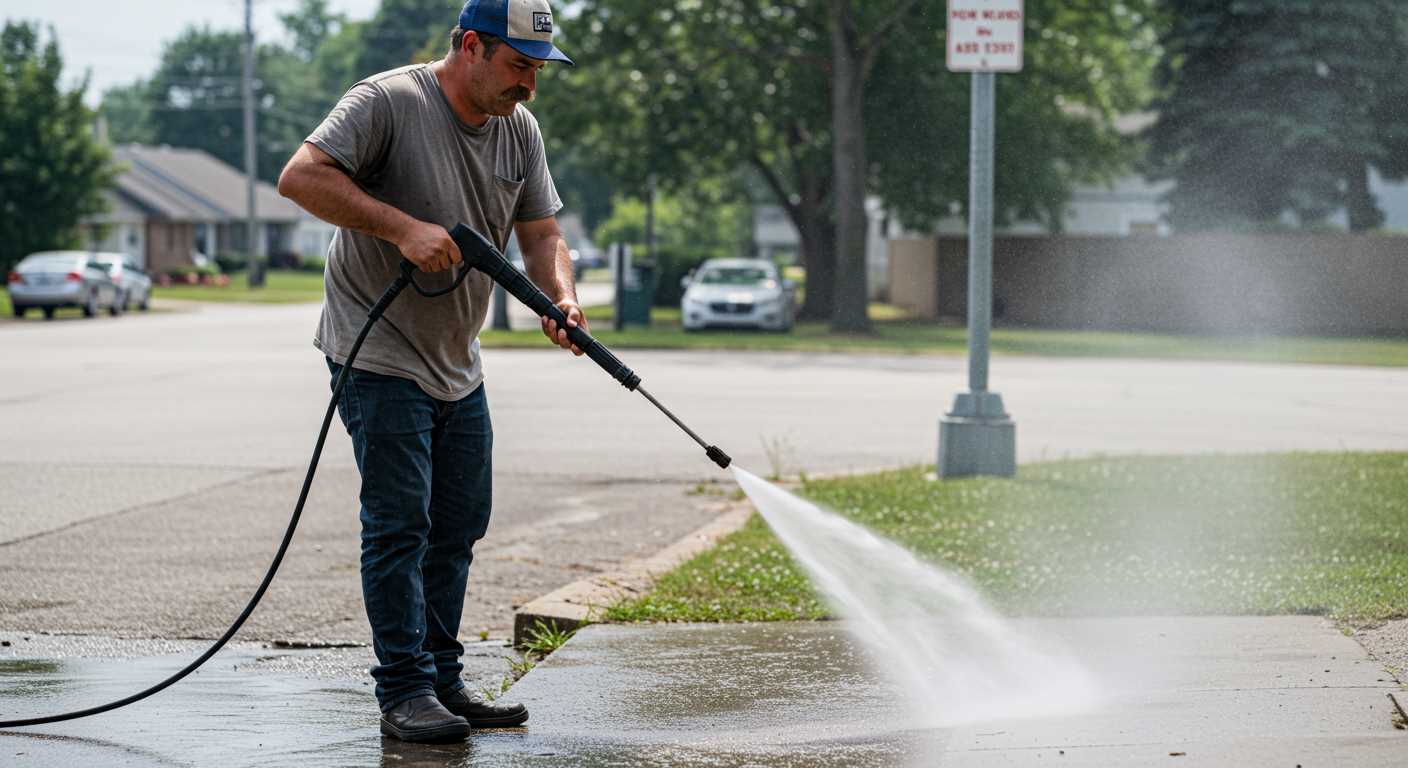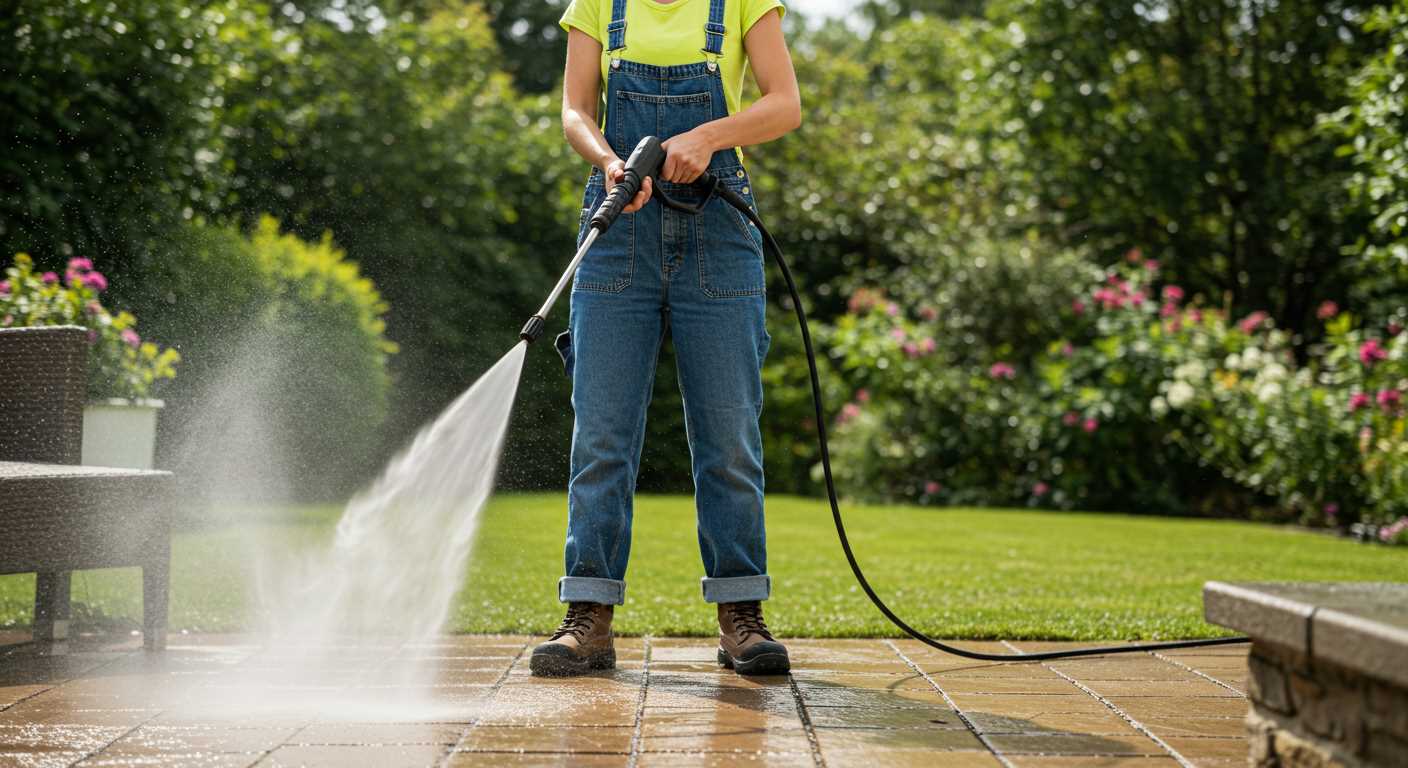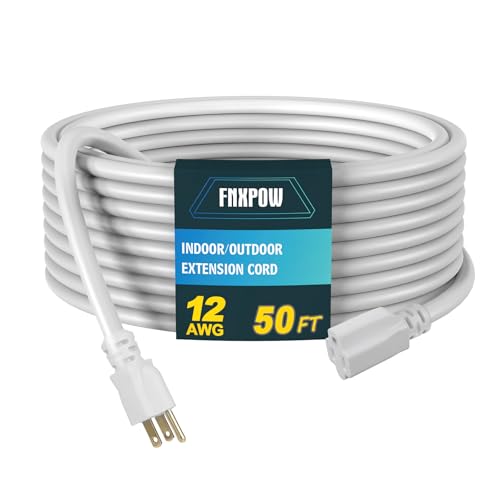



Regularly inspecting and cleaning the inlet filter is essential for optimal performance. A clogged filter can restrict water flow, leading to reduced efficiency. Disconnect the power source, remove the filter, rinse it thoroughly under running water, and allow it to dry completely before reassembling.
Next, maintaining the spray nozzle is critical. Over time, debris can accumulate, affecting the spray pattern. Detach the nozzle and soak it in warm, soapy water. Use a soft brush to gently clean any built-up grime, ensuring the orifice is clear. Rinse thoroughly and reattach with care.
It’s wise to store the equipment properly after each use. Keep it in a cool, dry place away from direct sunlight. Removing any remaining water from the hose helps prevent mildew and extends its lifespan. Additionally, check for leaks or cracks in the hose before each use to avoid unexpected failures.
Another point to consider involves the motor and pump. Periodically inspect these components for any signs of wear or damage. If you hear unusual noises while operating, this may indicate a problem that requires attention. Lubricate moving parts as per the manufacturer’s instructions to ensure smooth operation.
Lastly, a seasonal deep clean of the appliance can greatly enhance longevity. Follow the manufacturer’s guidelines for thorough maintenance procedures, which often include checking the seals and cleaning the internal components to prevent build-up. By consistently adhering to these steps, the unit will serve you reliably for years to come.
Maintenance Tips for Your High-Pressure Cleaner
Regularly inspect the power cord for any signs of wear or damage. If you identify any issues, replace it immediately to ensure safety. A frayed cable can lead to electrical shocks or equipment failure.
Keep the nozzle clean and free from clogs. Use a small, thin wire or a nozzle cleaner specific to your model to remove any blockages. This will help to maintain optimal water flow and pressure during operation.
Change the water filter periodically to avoid debris entering the machine. A clogged filter can lead to reduced performance and potential damage to internal components.
After each use, run clean water through the system for a few minutes, especially if you’ve been using detergent. This clears out residual soap and prevents buildup in the pump and hoses.
Store the machine in a dry location and avoid exposing it to extreme temperatures. This can prolong its lifespan and prevent damage to the internal parts.
Regularly check and tighten any loose connections or fittings. Vibration during use can cause bolts or screws to loosen over time, leading to leaks.
Examine hoses for kinks or wear. Replace any damaged hoses to prevent decreased pressure and ensure a steady water supply. Don’t leave the hose coiled tightly for extended periods, as this can cause damage.
Consider using a pressure gauge to check the system’s performance. A drop in pressure may indicate a blockage or internal issue that needs to be addressed.
Checking and Replacing the Power Cord
Regularly inspect the power cord for any signs of wear, such as fraying, cuts, or exposed wiring. If you notice any damage, it’s crucial to replace the cord immediately to ensure safety and proper functionality. Start by unplugging the device to avoid any electrical hazards.
To replace the cord, you’ll need to disassemble the casing of the unit. Use a screwdriver to carefully remove screws without damaging the plastic. Once opened, locate the connection points of the cord on the internal circuit board.
Detach the old cord by unscrewing it from the terminals. Take the new power cord, preferably one that matches the original specifications, and connect it to the same terminals. Ensure that the connections are tight and secure to prevent any future issues.
After replacing the cord, reassemble the casing, ensuring that all screws are tightened correctly. Always test the unit in a safe environment before returning it to regular use, paying special attention to any unusual sounds or smells that may indicate further problems.
Cleaning the Water Inlet Filter
Before any operation, disconnect the unit from the power source. The water inlet filter often collects debris, affecting performance. Regularly checking it ensures optimal functionality.
Steps for Cleaning

Locate the water inlet filter, typically situated where the garden hose connects. Unscrew or pull out the filter carefully; do not apply excessive force. Rinse under running water to remove trapped particles. If the filter appears damaged or excessively clogged, consider replacing it with a new one.
Frequency of Cleaning
Clean the filter every few months or more frequently if used in dusty environments or with water that may contain sediment. Keeping this component clear aids in prolonging the lifespan of the appliance and maintaining its efficiency.
Inspecting and Changing the Nozzle
Regularly examining and swapping out the nozzle can significantly enhance performance. To begin, disconnect the unit from the power source and water supply. This ensures safety during the process.
Check the nozzle for clogs and wear by aiming it at a designated area and activating the trigger. If the spray pattern is uneven or weak, it’s time to inspect further. Look for debris inside the nozzle that may restrict flow. A simple cleaning can often rectify minor blockages.
For deeper cleaning, soak the nozzle in hot soapy water for about 15-20 minutes, then use a soft brush to remove any stubborn grime. Rinse thoroughly before reconnecting.
When it’s time to replace the nozzle, consider the following:
- Identify the appropriate nozzle type based on the tasks you’ll tackle, whether it’s a fan spray for delicate surfaces or a rotary for tougher dirt.
- Consult the manufacturer’s specifications for compatible nozzle sizes.
- Purchase from a reputable supplier to ensure quality.
After obtaining a new nozzle, installation is simple:
- Aim the nozzle end into the unit’s lance without forcing it.
- Secure it by twisting gently until it locks in place.
Finally, conduct a quick test by reconnecting the water supply and turning on the power. Check for any leaks or irregular patterns in the spray. Address any issues before resuming work.
Flushing the Pump After Use
Immediately after finishing, it’s crucial to flush the pump with clean water. This removes soap, dirt, and preventable debris that could cause damage over time. Connect a garden hose to the water inlet, ensuring a tight seal to avoid leaks.
Flushing Procedure
Turn on the water supply and allow the system to run without pressure for approximately two minutes. This ensures that all contaminants are expelled from the interior components. After the flushing is complete, switch off the water supply.
Final Steps
Once the water is off, detach the garden hose and run the unit for about 30 seconds to eliminate any remaining moisture inside the pump. This practice significantly prolongs its lifespan and ensures optimal performance during your next use.
Storing the Washer Properly During Off-Season
Drain all water from the unit. This prevents freezing and potential damage during colder months. Disconnect the supply hose and drain it fully.
Use a pump saver solution or RV antifreeze to protect internal components. This is particularly beneficial if your equipment will be stored in an area prone to low temperatures.
Clean all accessories thoroughly before storage. Remove nozzles and filters, washing them with warm soapy water to eliminate dirt and debris.
Store in a dry, climate-controlled environment. Avoid damp areas to prevent rust and corrosion. Ensure it is elevated off the ground to avoid moisture accumulation.
Avoid stacking heavy items on top. This prevents damage to sensitive parts and preserves the integrity of the equipment.
Wrap the power cord neatly to avoid tangling. Consider using a cord organizer or simply securing it with zip ties.
Document the maintenance activities performed before storage. This will make the next use easier and ensure no steps are overlooked when preparing for the season ahead.
- Remove batteries, if applicable, and store them in a cool, dry place.
- Check for any signs of wear or damage during storage. Address any issues immediately.
- Cover the unit with a breathable tarp to protect against dust while allowing airflow.
Consider establishing a routine for seasonal checks to ensure reliability when the time comes to bring the equipment back into action.
Managing and Preventing Hose Damage
To prevent abrasion and kinking during use, always uncoil the hose completely before starting. This practice prevents any tight bends that may lead to cracking over time. Store the hose neatly in loops rather than tight coils, using a garden hose reel if possible.
Routine Inspections
Regularly examine the entire length of the hose for signs of wear such as cuts, frays, or bulges. Early detection of damage can save you from costly replacements. Pay attention to areas near the connectors; these are common sites for leaks.
Proper Handling Techniques

Keep the hose elevated when using it on rough surfaces to avoid unnecessary abrasion from rocks or debris. Avoid dragging the hose over sharp edges, and be cautious to prevent tangling, as this can lead to excessive stress on certain parts.
| Common Issues | Preventive Measures |
|---|---|
| Kinking | Uncoil fully before use, store in loops |
| Fraying | Inspect regularly, replace damaged sections |
| Cracking | Avoid tight bends, handle gently |
| Leaks | Check connectors, ensure tight seals |
Using protective covers during storage can safeguard against UV exposure and environmental damage, which can contribute to hose degradation. Regularly applying a silicone lubricant to the connectors can enhance their longevity and efficiency.
Lubricating Moving Parts for Longevity
Conduct regular lubrication of moving components to prevent wear and ensure trouble-free operation. Use a high-quality lubricant specifically designed for mechanical systems, ideally one that can withstand both high pressure and varying temperatures.
Key Areas to Lubricate
Focus on these parts:
| Part | Recommended Lubricant | Frequency |
|---|---|---|
| Pump Piston | Synthetic grease | Every 25 hours of use |
| Motor Bearings | Light machine oil | Every 50 hours of use |
| Wheels and Axles | Multi-purpose lubricant | As needed |
Application Tips

Apply lubricants sparingly to avoid attracting dirt and debris. Use a clean cloth to wipe excess away after applying. For best results, locate lubrication points as specified in the manufacturer’s guide.
Staying proactive with these practices will significantly enhance the lifespan of your equipment, ensuring it operates smoothly when you need it most.
Testing the GFCI for Safe Operation
Regularly check the Ground Fault Circuit Interrupter (GFCI) when using this cleaning device. This component is vital for preventing electrical shocks. Follow these steps to ensure reliability:
- Plug the unit into a GFCI outlet.
- Press the “Test” button on the GFCI. The reset button should pop out, indicating that the circuit is functioning correctly.
- While keeping the unit plugged in, push the “Reset” button to restore power.
- Turn on the device to verify that it operates normally. If it fails, do not use it.
In case of a malfunction, consider these options:
- Inspect the outlet for signs of wear or damage.
- Replace the GFCI outlet if it consistently fails tests.
- Ensure the cord and connections are intact and free from fraying.
For locations without a GFCI outlet, utilise a portable GFCI adapter to maintain safety standards. This adapter provides essential protection, especially in outdoor conditions.
Regular checks of the GFCI can prevent hazardous situations and ensure continued effectiveness of your cleaning tool.









